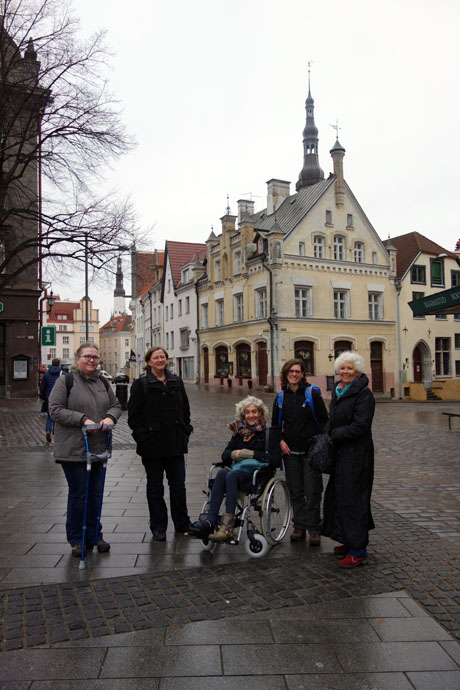Tallinn – Estonia!
November 6th, 2018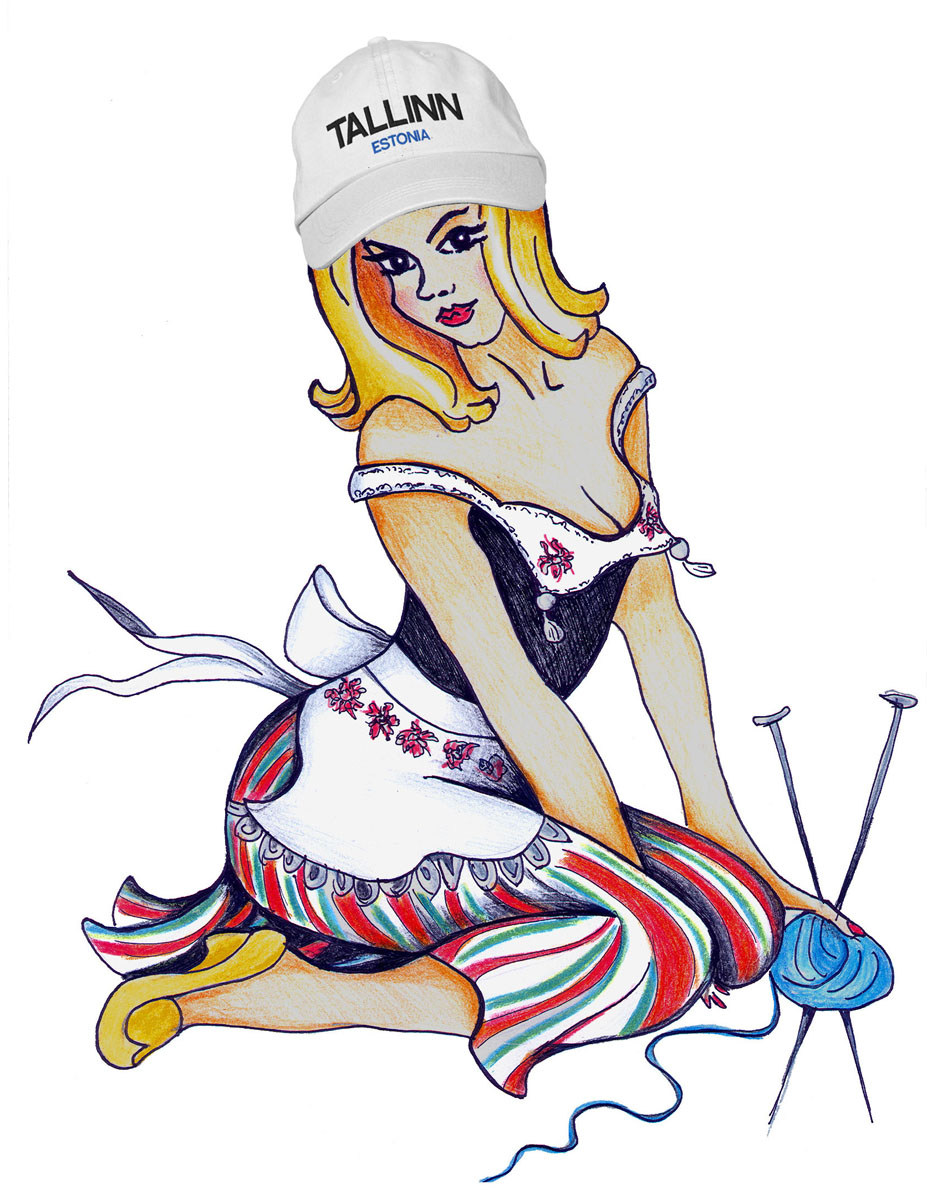

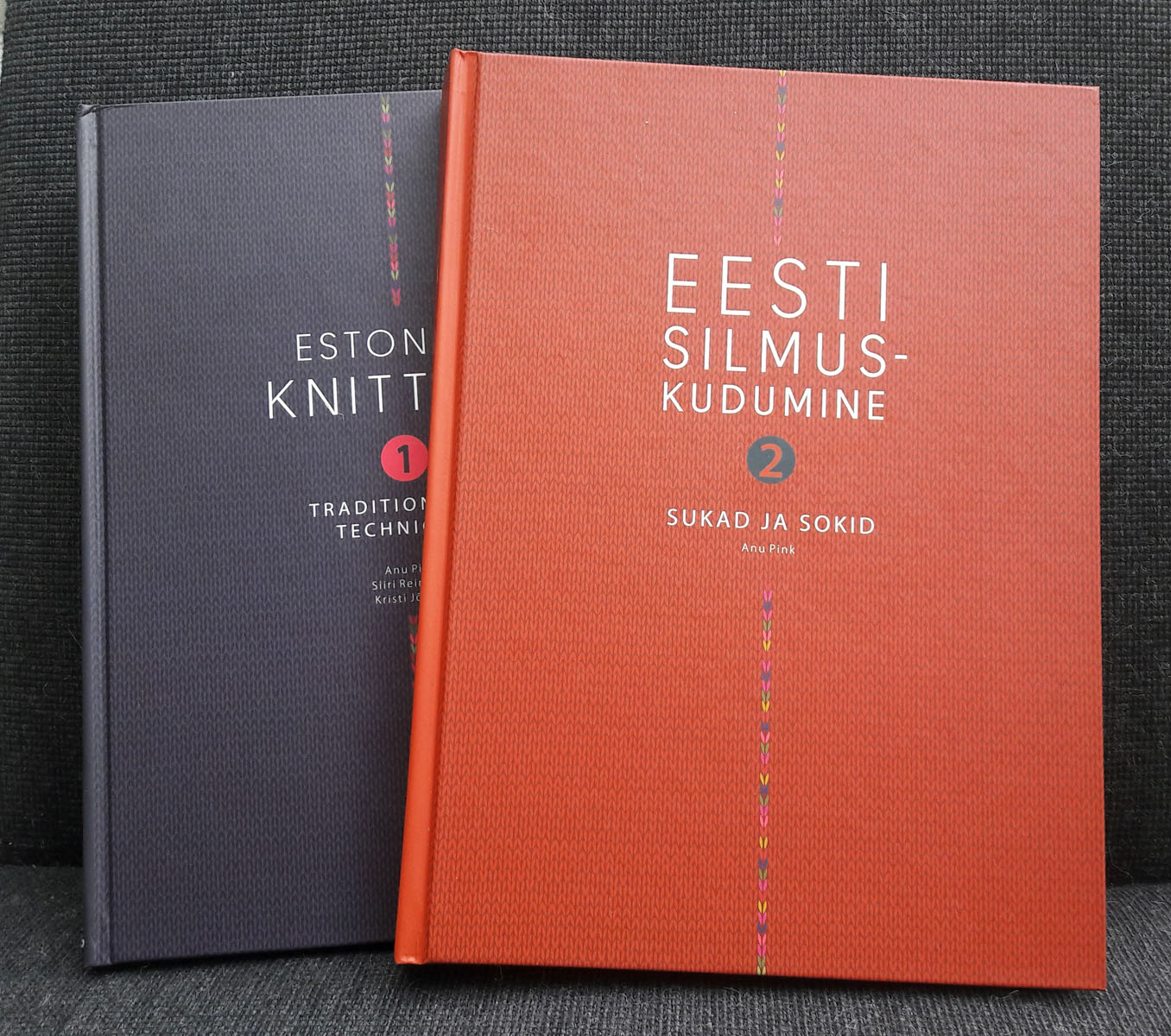 |
||
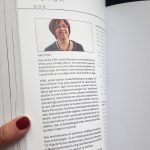 |
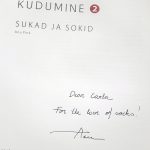 |
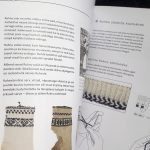 |
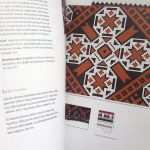 |
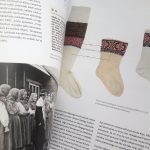 |
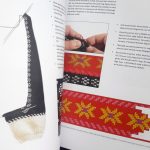 |
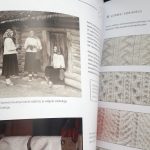 |
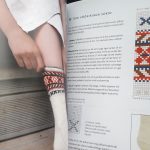 |
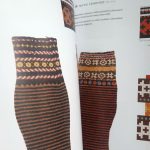 |
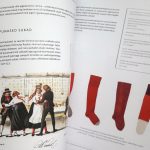 |
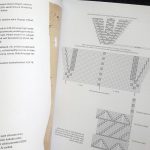 |
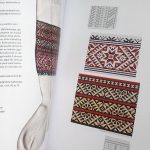 |
| Klik op afbeelding voor vergroting – Click to enlarge images | ||
De Estlanders weten van breien en willen dat ook nog graag delen met de rest van de breiwereld. Dus uitgeverij Saara besloot al die kennis over historie en techniek in een reeks van drie delen vast te leggen. Deel I kwam verleden jaar uit en was al een sensatie. Op veler verzoek van ijverige, nieuwsgierige breiers werd het boek in het Engels vertaald. En nu is het dan zo ver, verleden maand werd in het Eesti Rahva Museum in Tartu deel II geïntroduceerd. Een nóg dikker lijviger werk over de sok. Ja, dat kan als je het echt goed aanpakt, álles behandelt en het volpropt met afbeeldingen. Bijna vierhonderd pagina’s over Estlandse sokken, hielen, traditie, motieven, patronen en technieken. Er komt geen eind aan. Anu Pink, de autheur, heeft zichzelf overtroffen!
Katrin van Saara stuurde me voor mijn verjaardag dit prachtige boek. Ooit zal er een Engelse vertaling komen, maar zolang kunnen de echte liefhebbers van het sokken breien natuurlijk niet wachten…
The Estonian know about knitting and want to share it with the rest of the knitting world. So publishing house Saara decided to record all that knowledge about history and technology in a three-part serie. Part I came out last year and was already a sensation. By request from many avid, curious knitters the book was translated into English. And now the time is there, last month was part II introduced in the Eesti Rahva Museum in Tartu. An even thicker bulkier work about the sock. Yes, that is possible if you do it really well, cover all aspects and put in lots of images. Almost four hundred pages about Estonian socks, heels, tradition, motifs, patterns and techniques. There is no end to it. Anu Pink, the autheur, has surpassed himself!
Katrin from Saara sent me this beautiful book for my birthday. There will be an English translation sometime, but that long true lovers of knitting socks can not wait …
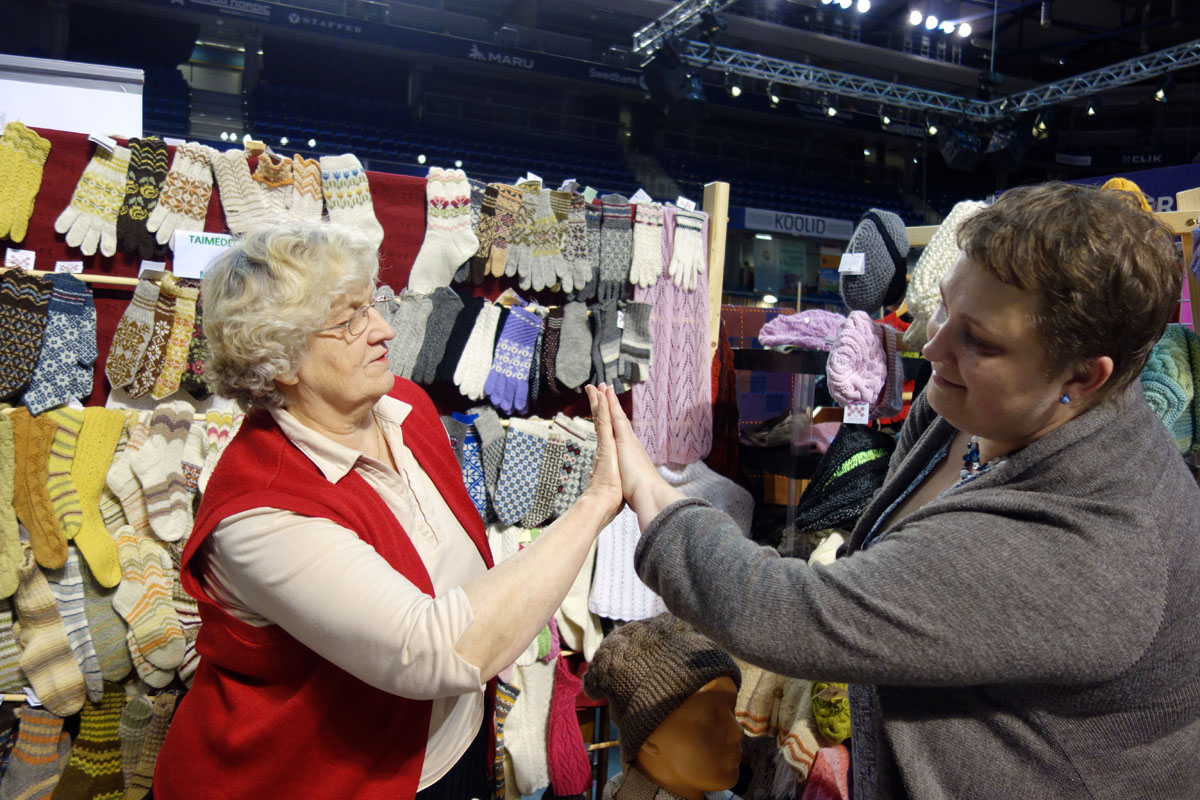 |
||
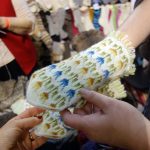 |
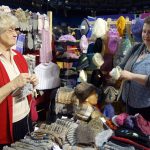 |
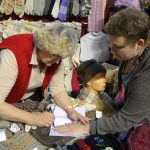 |
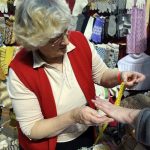 |
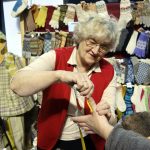 |
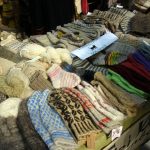 |
| Klik op afbeelding voor vergroting – Click to enlarge images | ||
Estlandse breiers nemen het breien op maat serieus. Op Mardilaat 2017 laat Monika haar oog vallen op superschattige wanten. Helaas, ze zijn nèt iets te klein! Maar de verkoopster is ook de breister en best bereid om voor Monika passende wanten te breien. Dan volgt er een proces met veel Estlands overleg waar ik niets van verstond, maar wat zou gaan leiden tot een paar wanten in de perfecte maat.
Het proces van het maatnemen:
De wanten zijn gebreid door Imbi Karu uit Türi en geverfd met plantaardige verfstoffen.
Estonian knitters take knitting to measure seriously. At Mardilaat 2017 Monika spots super cute mittens. Unfortunately, they are just too small! But the saleswoman is also the knitter and quite willing to knit suitable mittens for Monika. Then a process with much Estonian chatting that I did not understand, but what would lead to a pair of mittens in the perfect size.
The process of taking the measuments:
The mittens are knitted by Imbi Karu from Türi and dyed with vegetable dyes.
Het resultaat / the result:
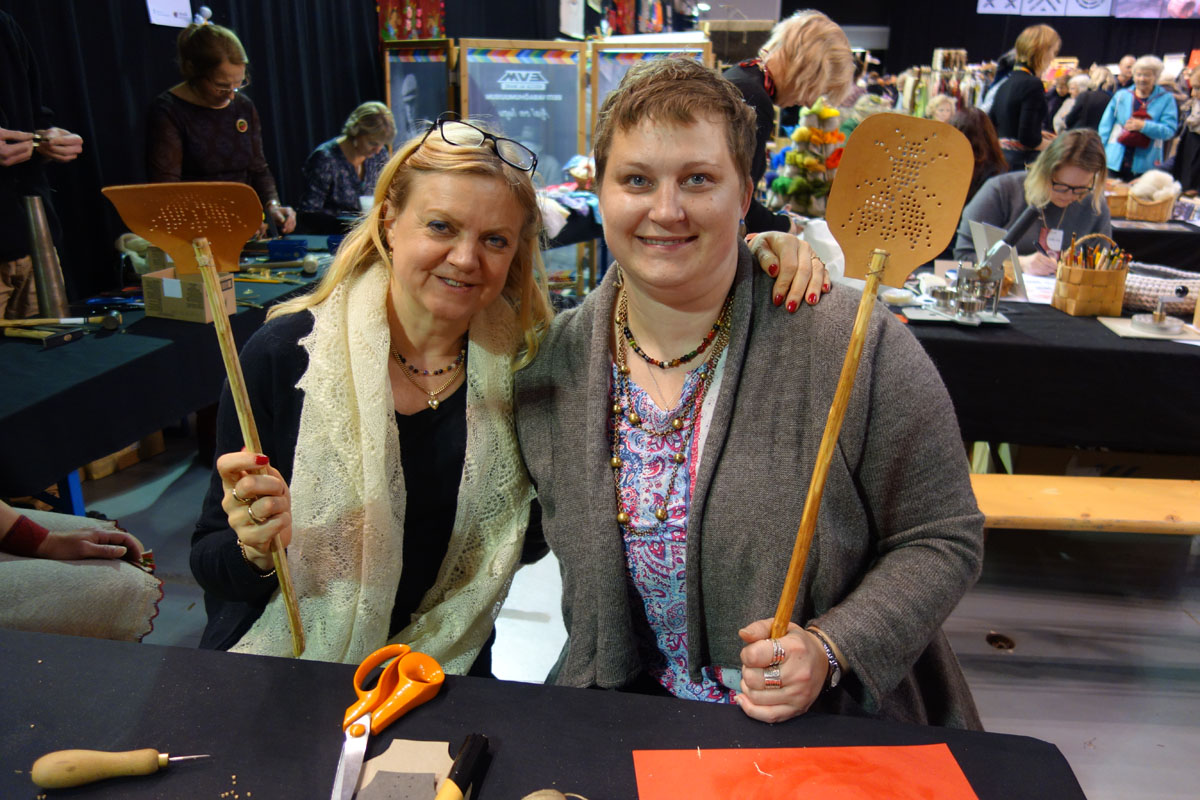 |
||
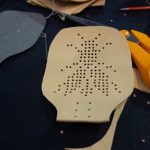 |
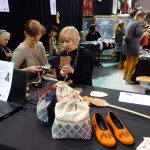 |
 |
| Klik op afbeelding voor vergroting – Click to enlarge images | ||
Vliegenmeppers zijn een eerste levensbehoefte op het Estse platteland in de zomer, maar ik twijfel aan het praktisch nut van de exemplaren van stevig leer met vliegvormige gaatjes die Monika en ik maakten op Mardilaat tijdens een workshop. Al dit vieze geplette vliegen op het leer, dat is niet handig, maar mogelijk weten mijn schoonzusjes betere toepassingsmogelijkheden, want zij kregen de mepper als kerstgeschenk.
Fly catchers are a first necessity of life in the Estonian countryside in the summer, but I doubt the practicality of the solid leather ones with fly-shaped holes that Monika and I made at Mardilaat during a workshop. All this dirty smashed flies on the leather, that is not handy, but maybe my sister-in-law know better applications, as they got my fly catcher as a Christmas present.
Eerst knip je met een scherpe schaar de vorm eruit, dan pons je de gaatjes door een sjabloon met de vliegvorm die je er daarna tot ronde gaatjes stanst met een flinke slag met een zware hamer. Dan nog even invetten met leervet en aan het stokje bevestigen door het in de inkeping te schuiven. Vastmaken met linnen touw en je bent klaar om te meppen!
First you cut out the shape with a sharp pair of scissors, then you punch the holes through a template with the fly shape. then you punch round holes with a big blow with a heavy hammer. After that put some grease on with grease on it and attach to the stick by sliding it into the notch. Fasten it with linen rope and you’re ready to slap!
 |
||
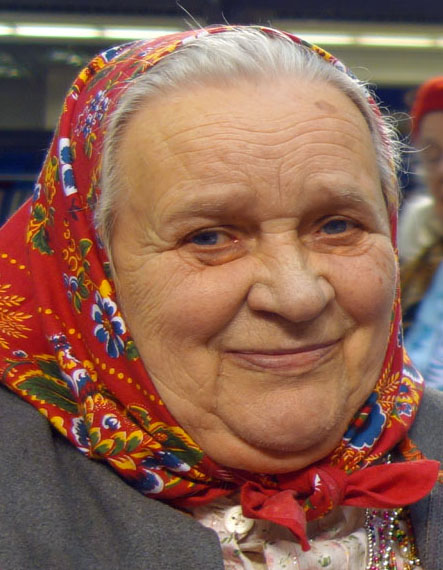
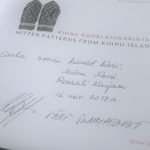 |
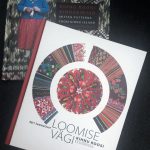 |
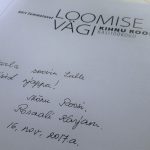 |
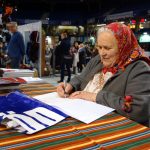 |
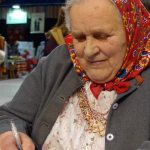 |
 |
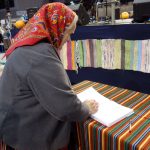 |
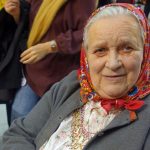 |
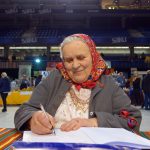 |
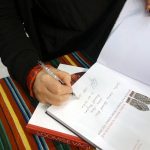 |
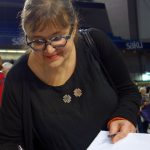 |
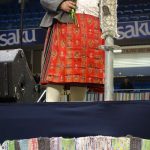 |
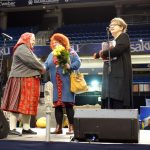 |
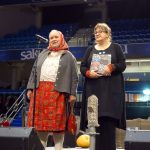 |
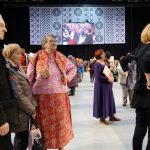 |
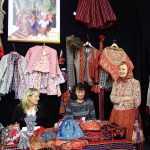 |
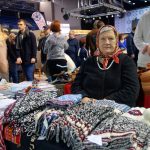 |
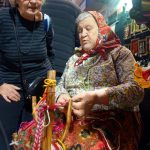 |
| Klik op afbeelding voor vergroting – Click to enlarge images | ||
Veel mensen hebben idolen, ook ik. Maar die van mij zijn meestal bejaarde vrouwen die van wanten (breien) weten! In 2011 ontmoette ik Kihnu Roosie, één van die bijzondere oude dametjes, op Kihnu, tijdens een reis naar het eilandje ten zuid-westen van Estland. Daarna trof ik het alsmaar niet om haar nogmaals te ontmoeten, tot ik een paar weken geleden haar zomaar opeens aantrof bij de stand van de Kihnu-vrouwen op Mardilaat in Tallinn. Ze was daar, samen met haar biografe Kärt Summatavet, om haar nieuwe boek te introduceren en signeren. Heel lief schreef ze in mijn boeken dat ze me snelle vingers en goed werk toewenste, waarna ook Kärt haar handtekening erin zette. Dat maakt zo’n boek direct tot een extra dierbaar bezit.
Many people have idols, even me. But mine are mostly elderly women who know how to knit! In 2011 I met Kihnu Roosie, one of those special old ladies on a trip to Kihnu, the small island south-west of Estonia. After that I did not find an opportunity to meet her again, until a few weeks ago I suddenly saw her at the Kihnu women’s stand at Mardilaat in Tallinn. She was there, together with her biographer Kärt Summatavet, to introduce and sign her new book. Very sweet she wrote in my books that she wished me quick fingers and good work, after which Kärt also put her signature in it. That makes such a book directly into an extra dear and valuable possession.
Roosi speelt een belangrijke rol in het conserveren van de handwerkcultuur van het mooie eiland Kihnu. Ze verzamelde jarenlang de patronen en bewaarde een schitterende collectie in haar huisje op het eiland. Roosi heeft geen kinderen, dus het is van het grootste belang dat de collectie ook als deze in 1935 geboren dame er niet meer is, in goede handen komt. Ja, reken maar uit,… Kärt Summatavet, een ontwerpster van prachtige sieraden en afgestudeerd op dit onderwerp, zag het belang ervan in schoot te hulp. Ze documenteerde de geschiedenis van het leven van Roosi en haar opmerkingen over de cultuur op het eiland, maar hielp haar ook haar patronen en commentaar op die patronen op te nemen in boeken die zowel in het Ests als in het Engels zijn uitgegeven.
Roosi plays an important role in preserving the handicraft culture of the beautiful island of Kihnu. She has collected the patterns for years and kept a beautiful collection in her cottage on the island. Roosi has no children, so it is of the utmost importance that the collection, when this lady born in 1935 is no longer there, will be in good hands. You do the maths,… Kärt Summatavet, a designer of beautiful jewelery and graduate on this subject, saw the importance of helping her. She documented the history of Roosi’s life and her comments about the culture on the island, but also helped her to incorporate her patterns and comments on those patterns into books published in both Estonian and English.
De Estlandse cultuur kent veel mystieke en symbolische verwijzingen, die worden verwerkt in textiel. Toen ik Kärt nogmaals ontmoette in Tallinn om onze ideeën uit te wisselen, lichtte ze dit toe door de symboliek in een Kihnu want te verklaren. Ze las het verhaal in de want alsof het een spannend boek was, waardoor de gebreide want opeens een veel diepere betekenis en lading kreeg. Textiel en kleding met een diepere betekenis, prachtig!
Estonian culture has many mystical and symbolic references, which are incorporated into textiles. When I met Kärt again in Tallinn to exchange our ideas, she made me aware of this by explaining the symbolism in a Kihnu. She read the story in the mitten as if it was an exciting book, with the result that the knitwear suddenly acquired a much deeper meaning and meaning. Textiles and clothing with a deeper meaning, beautiful!
Het wordt hoog tijd voor een reisje naar mijn geliefde Estland. Midden november is een geschikte tijd, want dan vieren de Estlanders Mardilaat (Sint Maarten) met een feestelijke markt in de Saku Suurhall in Tallinn die wordt georganiseerd door de Estonian Folk Art and Craft Union. Dit wordt de vierde keer dat ik er bij ben en iedere keer geniet ik weer van ‘t typisch Estse sfeertje, de kraampjes met handwerk en de ontmoetingen met Estlandse handwerkers. Vrijwel alle handwerkers uit Estland, waaronder de meesterbreiers en velen die zich met traditionele kostumes en textiel bezig houden, komen er vier dagen samen. Buitenlanders zie je er sporadisch, hooguit wat Letten en Finnen en een handjevol mensen met andere nationaliteiten, want dit is echt een Estlands feestje.
Vervelen zal ik me niet in Tallinn, maar ook een reis naar Tartu staat op het programma, mits de weersomstandigheden goed zijn. Daar heeft het kort geleden heropende Eesti Rahva Museum een tentoonstelling over textiel, mode en traditioneel Estlandse kostumes die ik nog steeds niet heb gezien. De Letten waren er al en laten op Facebook al zien hoe goed en uitgebreid de tentoonstelling is.
Maar bovenal verheug ik me op het zien van mijn Estlandse vrienden en vooral mijn vriendin door de jaren heen, Monika! See you soon!
It is time for a trip to my beloved Estonia. The middle of November is a good time, because then the Estonians celebrate Mardilaat (Saint Martin), a festive market in the Saku Suurhall in Tallinn organized by the Estonian Folk Art and Craft Union. This will be the fourth time I will go and every time I enjoy the typical Estonian atmosphere, the stands with handicrafts and the meetings with Estonian crafters. Almost all crafters from Estonia, including the master knitters and many engaged in traditional costumes and textiles, will spend four days together. Foreigners are there sporadically, maybe some Latvians and Finns and a handful of people with other nationalities, because this is really an Estonian party.
I not get bored in Tallinn, as also a trip to Tartu is on the program, if weather conditions permit. There the recently reopened Eesti Rahva Museum has an exhibition about textile, fashion and traditional Estonian costumes that I have not seen yet. The Latvians already were there and show on Facebook how good and extensive the exposition is.
But above all, I am looking forward to seeing my Estonian friends and foremost all friend for many years, Monika! See you soon!
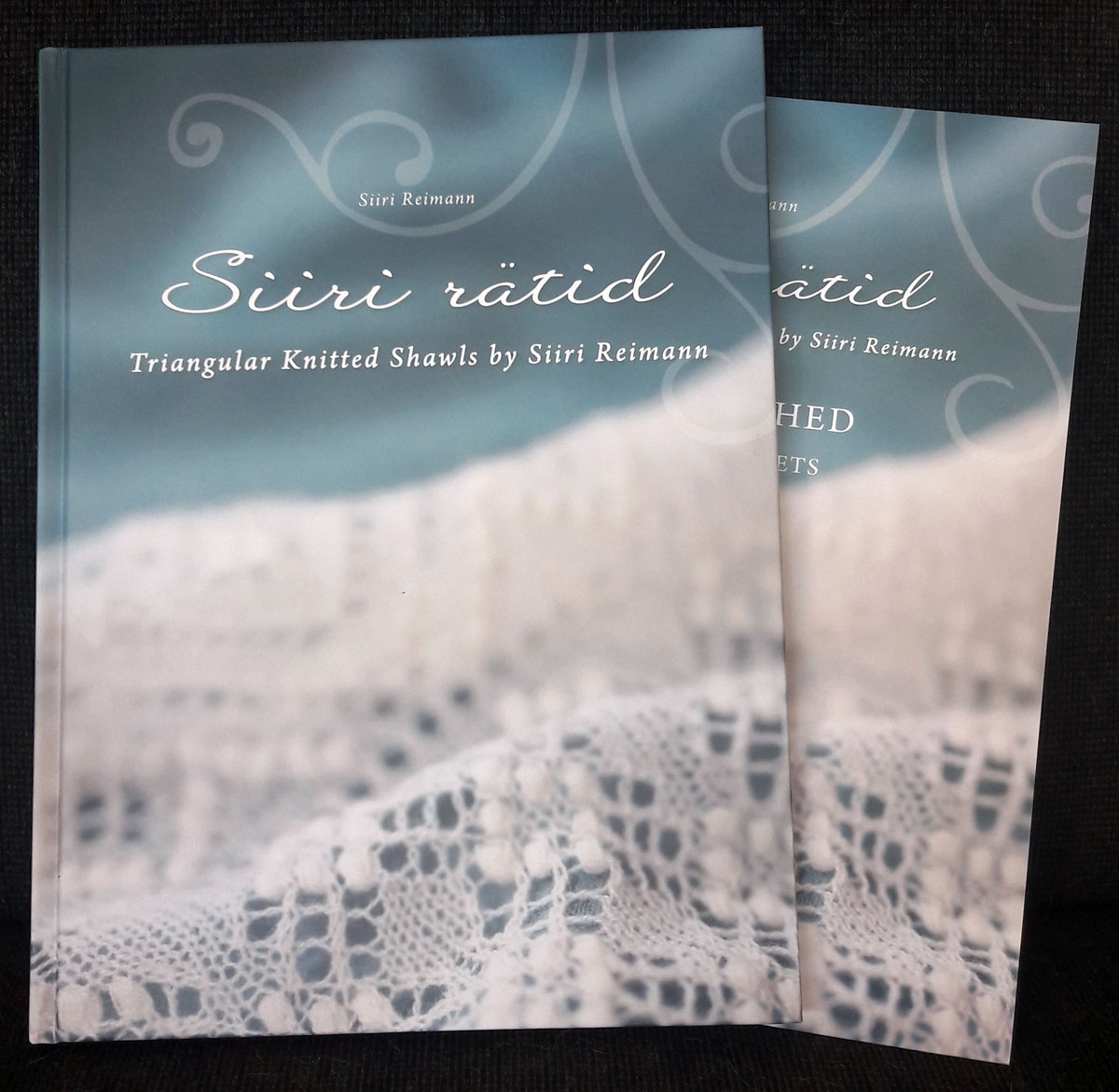
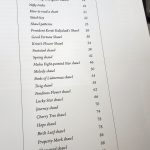 |
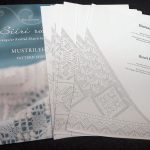 |
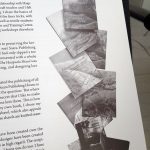 |
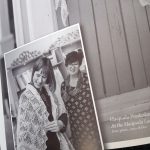 |
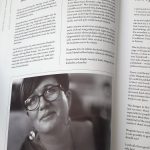 |
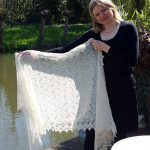 |
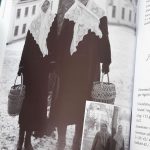 |
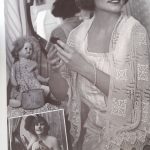 |
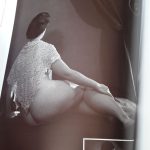 |
| Klik op afbeelding voor vergroting – Click to enlarge images | ||
Er is weer een juweeltje van een kantbreiboek uit. Uitgeverij Saara is enkele jaren geleden al begonnen met het publiceren van een prachtige serie boeken over Haapsalu kantbreien. Verleden maand kwam er alweer eentje uit, dit keer met ontwerpen van Siiri Reimann. Het boek bevat de algemene uitleg over hoe je een Haapsalu shawl breit en 21 patronen van driehoekige shawls. Alles in het Ests en gelukkig ook in het Engels. De teltekeningen zijn uitgetekend op aparte patroonvellen die je er in een apart mapje bij krijgt. Heerlijk, wat de grotere vellen met de teltekeningen geven veel meer overzicht dan kleine teltekeningetjes in het boek zelf. En dan het grappigste van het boek,… de fotografie! Modellen zijn in de poses en ambiance van modellen op foto’s uit de vorige eeuw geplaatst met hun shawls over de schouders. Sfeervolle plaatjes, van stoere vrouwen op de markt met dikke winterjassen tot dametjes in hun boudoir. Maar ook de shawl van de first lady Kersti Kaljulaid kreeg een plaatsje in het boek. Is het niet hoog tijd om voor Maxima iets te gaan breien?
Bij de Afstap in Amsterdam kan je het boek kopen voor € 37,50.
There is another lace knitting book published and I can assure you, it is a real gem. Saara Publisher House started publishing a beautiful series of books some years ago on Haapsalu lace shawls. Last month there was another one published, this time with Siiri Reimann’s designs. The book contains the general explanation of how to knit a Haapsalu shawl and 21 patterns of triangular shawls. Everything in Estonian and fortunately also in English. The charts are printed on separate pattern sheets that you find in a separate folder when you buy the book. That is great, as the larger sheets with the charts give much more overview than small charts in books. And then the funniest aspect of the book, … the photography! Models are placed in the poses and ambiance of models on photos of the last century with their shawls over the shoulders. Stunning pictures, from tough women on the market with thick winter coats to ladies in their boudoir. The shawl that was made for the first lady Kirsti Kaljulaid is also in the book. Is it time to knit something nice for our queen Maxima?
At the Afstap in Amsterdam you can buy the book for € 37.50.
Afgelopen week besteedde Harm Jonkers op zijn blog Estonian World aandacht aan Estlandse breitradities en het boek Warme Handen – Estlandse Wanten en Polswarmers dat The Dutch Knitters in 2011 uitbracht. Zijn blog brengt actuele en interessante nieuwtjes over Estland voor iedereen die het geweldige land een warm hart toedraagt.
Last week Harm Jonkers published an article about on his blog Estonian World about Estonian knitting traditions and the book Warm Hands – Estonian Mittens and Wrist Warmers released by The Dutch Knitters in 2011. His blog brings up-to-date and interesting news about Estonia for all those who love this wonderful country.

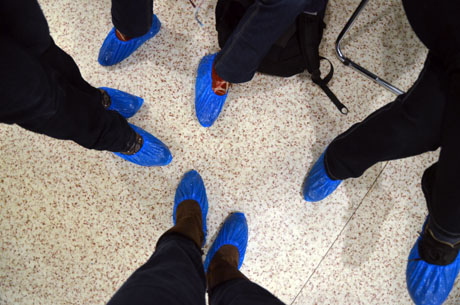 |
||
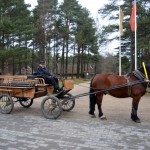 |
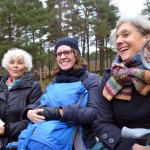 |
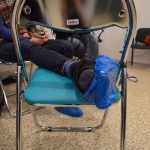 |
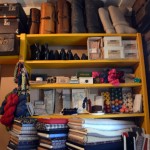 |
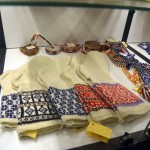 |
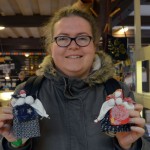 |
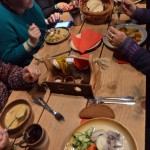 |
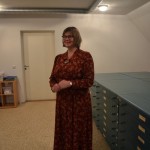 |
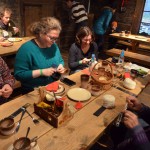 |
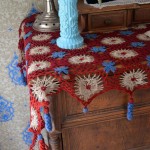 |
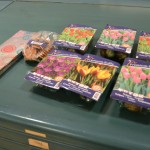 |
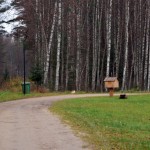 |
| Klik op afbeelding voor vergroting – Click to enlarge images | ||
Musea hebben vaak veel meer moois in depot dan ze laten zien in de gewone collectie. Een bezoek aan de museumdepot is dan ook altijd iets heel bijzonders. Bovendien beschikken de medewerkers vaak over veel kennis die ze graag met geïnteresseerden willen delen. In Tallinn bezochten we het depot van het Open Air Museum. Maret en Ulla ontvingen ons daar in met een grote verrassing. We werden met paard en wagen naar het gebouw gebracht waar het textieldepot zich bevindt. Ik was er al een keer een paar jaar geleden, maar wilde het dolgraag nog een keer zien en het prachtige brei- en handwerk aan mijn vrienden tonen. En ja, we hebben genóten met onze blauwe beschermschoenen en witte katoenen handschoentjes aan. Gebreide wanten, handschoenen, truien, haakwerk, geborduurde kleden, hoedjes enzovoort. Helaas mag ik geen foto’s van de breisels laten zien, maar natuurlijk heb ik wel álles gefotografeerd voor eigen studie en onderzoek.
Daarna zijn we nog even lekker door het enorme museumterrein gelopen, waar volgend jaar een perkje met Hollandse tulpen zal zijn. Ondanks de winterperiode waren veel boerderijtjes open, vaak zelfs met medewerkers in kleding uit de tijd van de huisjes. We zagen nog een vos, maar dat bleek een doodnormale huispoes. Rond lunchtijd deden we ons te goed aan het authentieke Estlandse eten in de herberg, waarnaar we te voet en te wiel naar Mardilaat vertrokken.
Museums often have many more beautiful things in storage than they show in the regular collection. A visit to the museum depot is always something very special. In addition, the employees often have much knowledge they want to share with interested visitors. In Tallinn we visited the depot of the Open Air Museum. Maret and Ulla received us in there with a big surprise. We were brought by horse and wagon to the building where the textile depot is located. I was already there once a few years ago, but loved to see it again and show the beautiful knitwear and crafts to my friends. And yes, we had a marvelous time, wearing our blue protective shoes and white cotton gloves. Knitted mittens, gloves, sweaters, crochet, embroidered rugs, hats and more. Unfortunately I can not show pictures of the knitted items, but of course I did make photos of everything for personal study and research.
Then we had a nice walk over the museum large grounds, where next year a flower bed with Dutch tulips will appear. Despite the winter time many farms were open for public, often with staff in clothing from the time of the cottages were build. We even saw a fox, but that turned an ordinary house cat. Around lunch time we enjoyed the authentic Estonian food in the inn and then we walk and rolled to spend the afternoon at Mardilaat .
 |
||
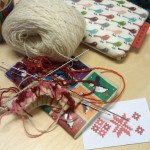 |
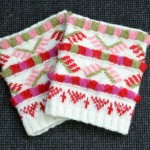 |
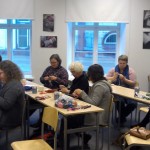 |
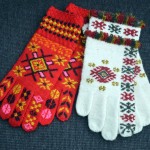 |
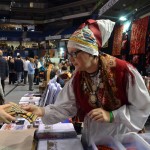 |
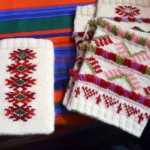 |
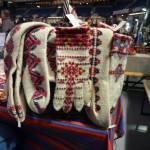 |
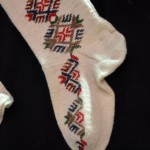 |
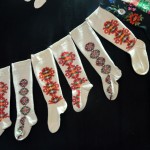 |
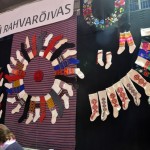 |
 |
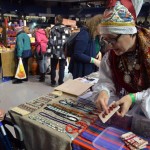 |
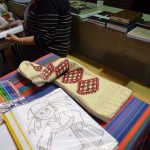 |
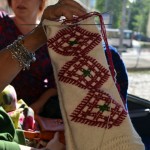 |
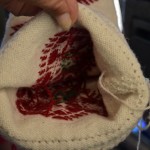 |
| Klik op afbeelding voor vergroting – Click to enlarge images | ||
Toen ik verleden jaar in Riga Anu Randma weer ontmoette en haar prachtige Roositud kousen zag, wist ik het al, ik wilde van haar Roositud leren breien. Monika regelde alles, dus toen ik een paar weken geleden weer in Estland was, schoven mijn reisgenoten, Monika, Monika’s zus Merike en hun teckels Mokka and Nelly en ik aan voor een lesje Roosimine. Het voorwerk hadden we op de appartementen al gebreid, dus we konden direct aan de slag. Roosimine is een prachtige techniek, waar je fantastisch leuke resultaten mee kan bereiken. Tijdens het breien weef je de draad om steken heen, waardoor motieven ontstaan.
Ik was helemaal geïnspireerd en breide thuis binnen enkele dagen een Roositud zakje met franje, Kihnu Vits en Roositud-motieven. Van Anu kocht ik een paar prachtige polswarmers in de traditionele rose-rode kleuren van Tõstamaa. Van vorige reizen naar Estland bracht ik al twee paar wanten met Roositud mee.
Inmiddels heb ik docent Anu Randma hernoemd, ze draagt nu voor ons de geuzennaam Anu Roositud. Dank je wel Anu, voor een geweldige workshop!
When I was in Riga last year I met Anu Randma again and saw her beautiful Roositud stockings, I knew it, I wanted her to learn me how to knit Roositud. Monika arranged everything, so when I was in Estonia again a few weeks ago, my traveling companions, Monika, Monika’s sister Merike and their dachshunds Mokka and Nelly and me joined in for a lesson Roosimine. The basic knitting we had done in the apartment, so we could start immediately. Roosimine wonderful technique, with which you can achieve great results. While knitting you weave your thread around stitches, causing motives to arise.
I was totally inspired and when back home I knitted within a few days a Roositud bag with fringe, Kihnu Vits and Roositud motifs. From Anu I bought a pair of beautiful wrist warmers in traditional rose-red colors of Tõstamaa. From previous trips to Estonia I brought already two pairs of mittens with Roositud.
Meanwhile I renamed teacher Anu Randma, for us she now can proudly use her nickname Anu Roositud. Thank you Anu for a great workshop!
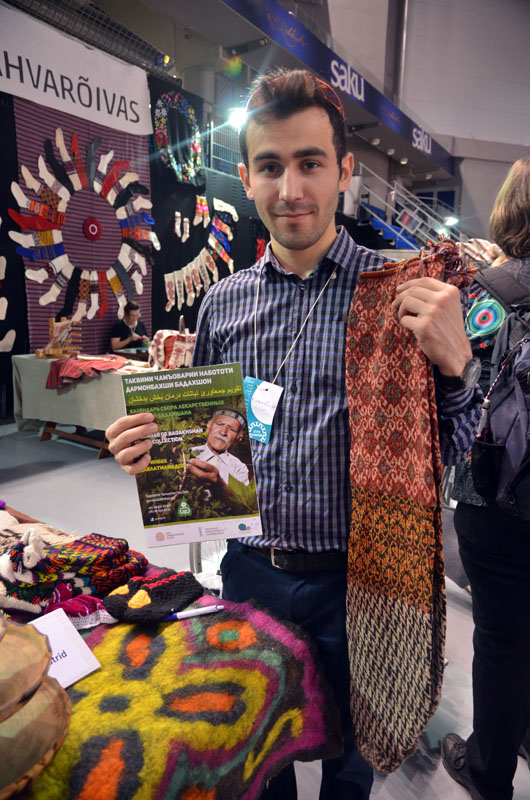 |
||
 |
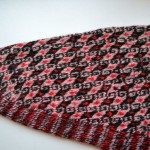 |
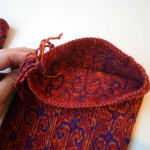 |
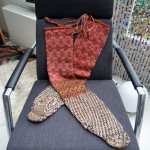 |
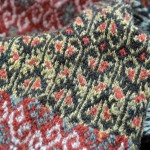 |
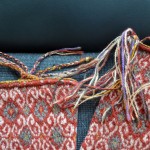 |
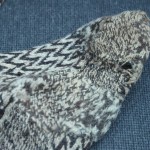 |
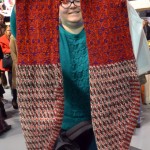 |
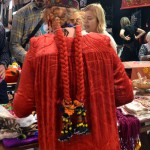 |
| Klik op afbeelding voor vergroting – Click to enlarge images | ||
Als je naar Estland gaat, verwacht je niet dat je met spullen uit Tadjikistan (land tussen Afghanistan en Kyrgyzstan) terug komt. Een handwerkende Tajikistaanse tante met haar neef/vertaler hadden er een standje vol kleurrijk brei- en haakwerk. Elsbeth vond er fantastische kousen met voeten zo groot, dat er een reus in kan. Gelukkig had tante nog een paar die ze de volgende dag voor mij meenam. Dit zijn echte oude met drie patronen en veel verschillende versteltechnieken in de voet. De wol is ruig en hard, maar de kleuren zijn nog steeds prachtig en mooi op elkaar afgestemd in de Oosterse patronen. Ze zijn ongewassen en ruiken naar een mens te paard, maar dat laat ik zo, want dergelijk mooi en kwetsbaar textiel gaat bij mij het sop niet in.
Ik kocht er ook een paar heel fel gekleurde handschoenen in Bosnisch haakwerk. Tante demonstreerde de techniek met een prachtig metalen haaknaaldje met een krul. Zo krijg je en dik, stevig en vast weefsel. De standhoudster van mooi Estlands aardewerk kocht een paar waar vingerpluimpjes aanzaten. Ze gaf me een zelfgemaakt speldje met een mot en we vonden het humor om het kwade te verzoeken door een mot op je breiwerk te spelden.
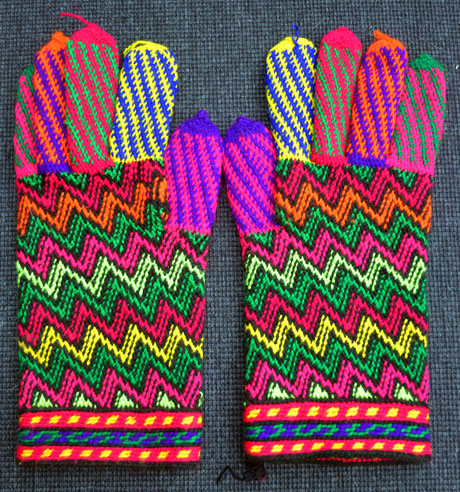 |
||
 |
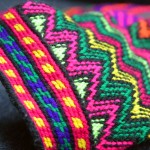 |
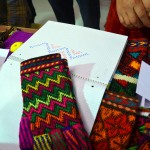 |
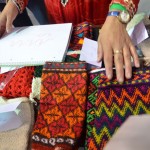 |
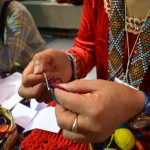 |
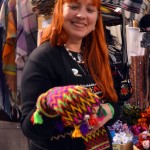 |
| Klik op afbeelding voor vergroting – Click to enlarge images | ||
If you go to Estonia, you do not expect you to come back with stuff from Tajikistan (land between Afghanistan and Kyrgyzstan). A crafting Tajikistan aunt and her nephew/translator had a stand with piles of colourful knitted and crocheted items. Elsbeth found it fantastic stockings with feet so large, the size of a giant. Fortunately, the aunt had aother pair for me that she brought for me the next day. This pair is real old with three patterns and many different adjustment techniques in the foot. The wool is rough and hard, but the colors are still gorgeous and nicely combined in the oriental patterns. They are unwashed and smell of a person on horseback, but I will leave them as they are, for I don’t like washing such a beautiful and vulnerable textile.
I also bought some very bright colored gloves made with the technique Bosnian crocheted. The aunt demonstrated the technique with a beautiful metal hook needle with a curl. This way you get and thick, firm and solid fabric. The woman who had a stand with beautiful Estonian pottery bought a couple with finger tassles. She gave me a homemade china badge with a moth and we thought is was fun to invite the evil by pinning a moth to your knitting.
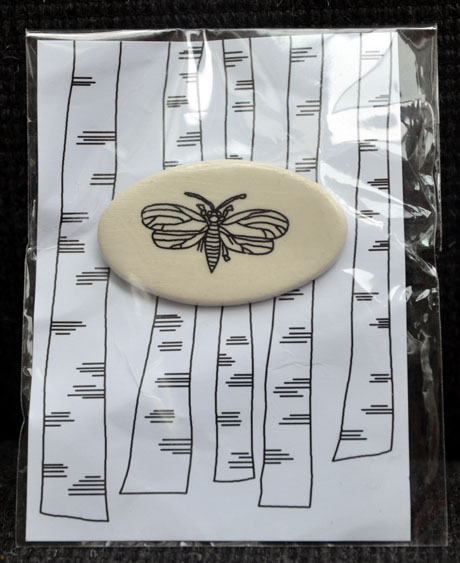
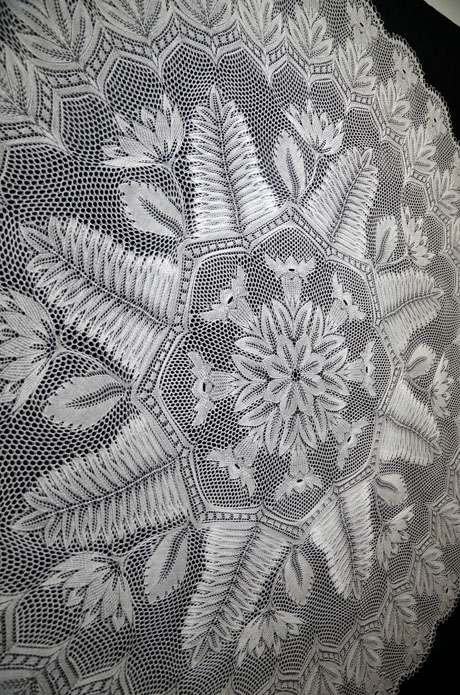 |
||
 |
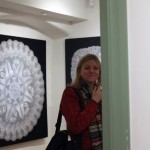 |
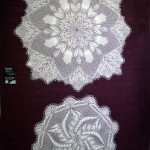 |
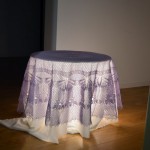 |
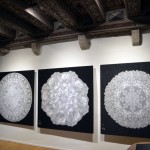 |
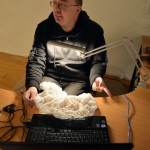 |
 |
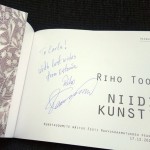 |
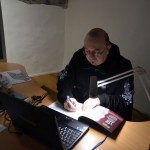 |
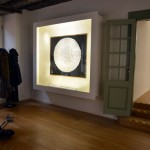 |
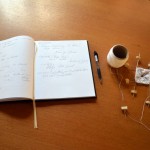 |
 |
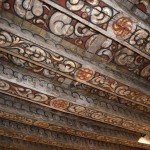 |
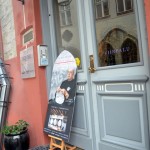 |
 |
| Klik op afbeelding voor vergroting – Click to enlarge images | ||
Zijn oma had ‘m leren breien, vertelde Riho Toomra me toen ik zijn tentoonstelling bezocht in het centrum van Tallinn. Hij had destijds wat weinig vrienden na een verhuizing naar een andere woonplaats en breien bleek een prima afleiding. En ondanks een ruig leven als rocker breit hij dat wat hij mooi vindt, de patronen van de Duitse breier Herbert Niebling. Hij ziet zichzelf als vertolker van de werken van een meester, zoals een violist de werken van een componist speelt naar beste kunnen en met een eigen hand van spelen, cq breien. De keurig opgespannen megadoilies zijn stijlvol geëtaleerd in een oud Ests pand met prachtig balkenplafond. Behalve van het schitterende breiwerk genoten we ook van het zien van het mooie pand.
Wie Riho’s werk in Nederland wil zien kan nog in Veendam terecht tot en met 10 january 2016. Echt de moeite waard!
His grandmother taught him how to knit, Riho Toomra told me when I visited his exhibition in the center of Tallinn. He then had few friends after moving to another place and knitting proved a great distraction. And despite a rough life as a rocker he knits what he thinks is most beautiful, the patterns of the German knitter Herbert Niebling. He sees himself as an interpreter of and work of a master, such as a violinist playing the works of a composer the best way he can and giving the music/knitting his own personal touch. The neatly stretched megadoilies are stylishly showcased in an old Estonian house with beamed ceiling. Apart from the wonderful knitting we also enjoyed seeing the beautiful building.
Who wants to see Riho’s work in the Netherlands can go to Veendam where his work is exhibited untill 10 January 2016. It is really worth going there to see it!
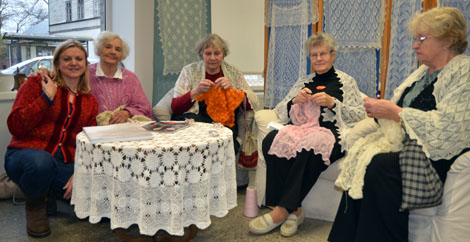 |
||
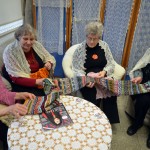 |
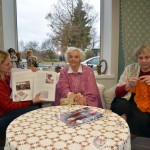 |
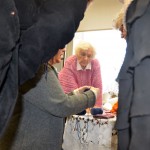 |
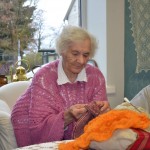 |
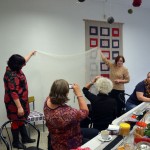 |
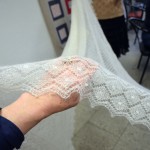 |
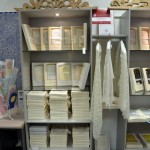 |
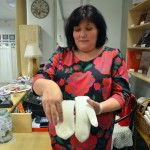 |
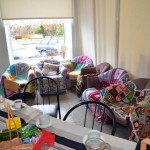 |
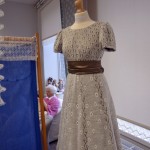 |
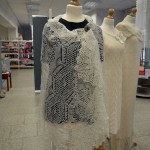 |
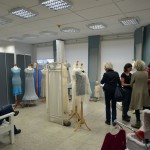 |
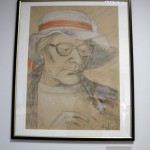 |
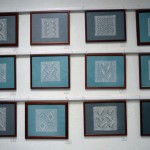 |
 |
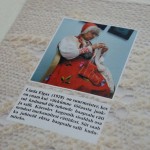 |
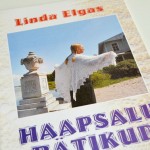 |
 |
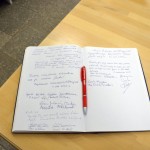 |
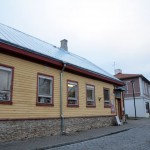 |
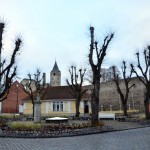 |
| Klik op afbeelding voor vergroting – Click to enlarge images | ||
Ooit kreeg ik van Monika het beroemde en zeer moeilijk te vinden boek van Linda Elgas. Ik was er als een kind zo blij mee, zodat Monika en ik alle momenten van pure blijdschap omdoopten tot Linda Elgas Moments. Verleden week had ik er weer eentje….
Op de tweede dag van onze reis gingen we met twee huurauto’s naar Haapsalu voor een bezoek aan het nieuwe Lace Center, het beeldschone stadje en de wolwinkeltjes. Bij het Lace Center werden we hartelijk ontvangen door Monika (nee, niet de ‘onze’, maar een medewerker van het centrum). Een heerlijke grote ruimte waar alle kantbreisels een mooie plek hebben gekregen en een museumwinkel. Er is ook plaats voor een kleine expositie, in dit geval van een moeder en dochter. Bij de ingang zaten wat oudere dames gezellig te breien, onder wie Aasa Joelaid, de ontwerpster van de kantpatronen in het boek Knitted Shawls of Aasa Joelaid… én Linda Elgas. Eindelijk, na pakweg vijf jaar, kon ik de Grande Dame van het Haapsalu kant persoonlijk ontmoeten! Een Real Life Linda Elgas Moment! Monika vertaalde voor ons dat ik ongelooflijk blij ben met mijn Haapsalu shawl in gesigneerde doos die zij speciaal voor mij heeft gebreid twee jaar geleden. Maar de breisters waren ook heel geïnteresseerd in de twijnend gebreide wanten en vooral ook in mijn Shetland shawl. Na het bestuderen van alle patronen en de breitechniek, meette Linda ‘m nog even aan het lichaam af. ‘Twee meter’, concludeerde ze tevreden.
Na een heerlijke lunch in ons ‘vaste’ restaurantje, bezoek aan diverse (wol)winkeltjes en een wandeling door het stadje en over de boulevard, reden we terug naar Tallinn.
Lieve breisters van het Haapsalu Lace Center, dank jullie wel voor de hartelijke ontvangst en de bijzondere ontmoeting. Tot snel!
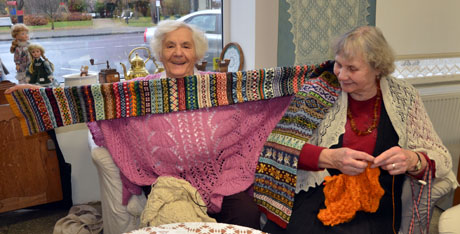 |
||
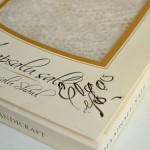 |
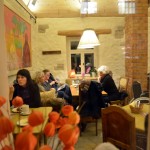 |
 |
 |
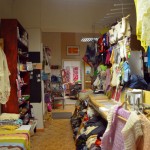 |
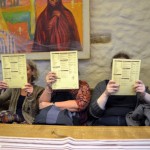 |
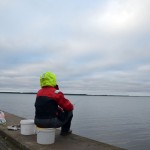 |
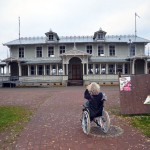 |
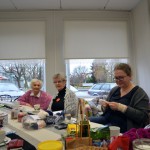 |
Some time ago Monika gave me a famous and very hard to find book by Linda Elgas. I was happy as a little kid, so after that Monika and I called all moments of pure joy Linda Elgas Moments. Last week I had such an experience again ….
On the second day of our trip we drove with two rental cars to Haapsalu to visit the new Lace Center, the beautiful little town and the wool shops. At the Lace Center we were warmly received by Monika (no, not “our” Monika, but an employee of the center). A nice big space, where the lacy knitwear was beautifully displayed and a museum shop. There is also a space for a small exposition, at this moment the work of a mother and her daughther is displayed there. At the entrance sat some elderly ladies knitting together, including Aasa Joelaid, the designer of the lace patterns in Knitted Shawls of Aasa Joelaid … ánd Linda Elgas. Finally, after about five years, I could personally meet the Grande Dame of the Haapsalu lace! A Real Life Linda Elgas Moment! Monika translated for us that I am incredibly happy with my Haapsalu shawl in autographed box she knitted especially for me two years ago. But the knitters were also very interested in the twined knitted mittens and especially in my Shetland shawl. After studying all the patterns and the knitting technique, Linda was measuring him with her own body. “Two meter,” she concluded in satisfied tone of voice.
After a delicious lunch in our ‘regular’ restaurant, visiting various (wool) shops and a stroll through the town and along the promenade, we drove back to Tallinn.
Dear knitters of the Haapsalu Lace Center, thank you for the warm welcome, it was so nice to meet you all. See you soon!
 Het zit er alweer op,… acht zalige dagen was ik met Anneloes, Cisca, Titia, Elsbeth en Marjon in Tallinn, Estland. We hebben zo ongelooflijk veel meegemaakt dat ik niet weet waar te beginnen met de blogs.
Het zit er alweer op,… acht zalige dagen was ik met Anneloes, Cisca, Titia, Elsbeth en Marjon in Tallinn, Estland. We hebben zo ongelooflijk veel meegemaakt dat ik niet weet waar te beginnen met de blogs.
We zijn natuurlijk trouw gebleven aan de traditie om te starten met een welkomstdiner met Monika in Kaerejan, het Estlandse restaurantje tegenover onze appartementen aan het Raekoja Plats. Er liggen gehaakte shawls over de stoelen en aan de muur hangt werk van Niebling-breier Riino Toomra, die op dit moment ook in Veendam exposeert. En het eten is er heerlijk!
Daarna hebben we Monika uitgenodigd om nog even een borrel te drinken in het appartement van Elsbeth, Titia en mij. We hebben haar flink verwend met cadeautjes als dank voor al haar hulp. Zij gaf ons een geweldig cadeau, namelijk onbeperkte toegang tot vier dagen Mardilaat in de vorm van een groen toegangsbandje. Dank je wel Monika!
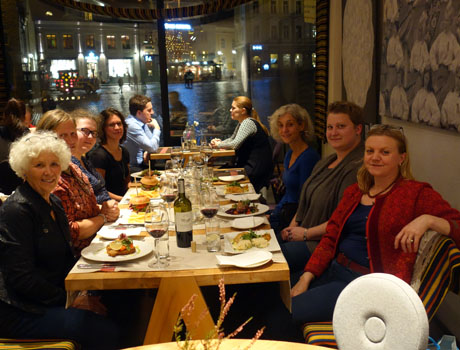
It’s already over… eight wonderful days I was in Tallinn, Estonia with Anneloes, Cisca, Titia, Elsbeth and Marjon. We’ve experienced so incredible much that I donot know where to start with the blogs.
Of course we are faithful to the tradition to start with a welcome dinner with Monika in Kaerejan, the Estonian restaurant on the other side of the square Raekoja Plats where our apartments were located. There are crochet shawls over the chairs and on the wall hangs work made by Niebling-knitter Riino Toomra, which also exhibits in Veendam at this time. And the food is delicious!
Then we Monika invited to have just have a drink in the apartment of Elsbeth, Titia and me. We have really spoiled her with gifts in gratitude for all her help. She gave us a great gift, namely, unlimited access to four days of Mardilaat fair in the form of an green entrance bracelet. Thank you Monika!
